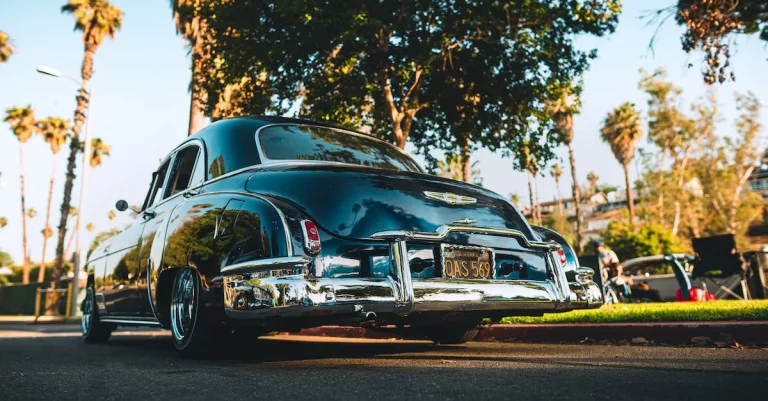New York Taxi Medallion Prices: An In-Depth Analysis
Owning a New York City taxi medallion was once seen as a surefire way to build wealth, with medallions selling for over $1 million at their peak. However, with the rise of rideshare apps like Uber and Lyft, taxi medallion values have plummeted in recent years. If you’re considering investing in a NYC taxi medallion, read on for a comprehensive overview of the market’s history, current prices, factors impacting values, and the future outlook.
Brief History of NYC Taxi Medallions
The New York City taxi medallion system was created in the 1930s in an effort to regulate the growing number of taxi drivers in the city. The medallion, a small metal plate affixed to the hood of a taxi, was issued by the city’s Taxi and Limousine Commission (TLC) and served as a license to operate a taxi.
The purpose of the medallion system was to limit the number of taxis on the road, ensuring that drivers could make a decent living and maintain a certain level of service.
Creation of the medallion system
The medallion system was implemented as a response to the chaos and unregulated competition that characterized the taxi industry in the early 20th century. Prior to the introduction of medallions, anyone with a car could operate as a taxi driver, leading to overcrowded streets and cutthroat competition.
The medallion system aimed to bring order to the industry by limiting the number of taxis and ensuring that only qualified drivers were able to operate.
Initially, the city issued only 11,787 medallions, a number that remained relatively stable for several decades. The medallions were initially priced at $10 each, but their value gradually increased over time as demand for taxis grew in the city.
Rapid appreciation in medallion prices
Over the years, the value of a New York City taxi medallion skyrocketed. By the late 1990s, the price of a medallion had reached over $200,000. This rapid appreciation in prices was fueled by several factors, including increased demand for taxi services, limited supply of medallions, and the perception that owning a medallion was a secure investment.
Investors saw the medallions as a way to generate steady income, as they could lease them out to drivers and collect a portion of the fares. Banks also saw the medallions as a safe investment and began offering loans to individuals looking to purchase them.
This led to a further increase in prices, as the availability of financing made it easier for people to enter the market.
Impact of rideshares and recent price declines
However, the advent of rideshare services like Uber and Lyft disrupted the traditional taxi industry and had a significant impact on the value of medallions. With the rise of rideshares, the demand for taxis decreased, leading to a decline in fares and ultimately a decrease in the value of medallions.
Recent years have seen a significant decline in medallion prices, with some medallions selling for a fraction of their peak value. This has had a profound impact on medallion owners, many of whom are struggling to make loan payments or sell their medallions at a loss.
It is important to note that the decline in medallion prices has had broader implications for the taxi industry as a whole. Many drivers have faced financial hardships as their income has decreased, and taxi companies have had to adapt their business models to compete with rideshares.
For more information on the history and current state of NYC taxi medallions, you can visit the official website of the New York City Taxi and Limousine Commission: https://www1.nyc.gov/site/tlc/about/tlc-history.page.
Current Taxi Medallion Prices in NYC
As the demand for taxi services continues to rise in New York City, the prices of taxi medallions have also experienced fluctuations. Medallions are licenses that allow individuals to operate taxis in the city.
They serve as a valuable asset for both corporate/fleet owners and independent owners, but their costs can vary depending on several factors.
Corporate/fleet medallions
Corporate or fleet medallions are typically owned by large transportation companies that operate a fleet of taxis. These medallions are often purchased in bulk and are subject to competitive bidding. The current prices for corporate/fleet medallions can range from $500,000 to $1 million, depending on market conditions.
It is important to note that the prices of corporate/fleet medallions can be influenced by various factors, such as the overall demand for taxi services, changes in regulations, and the emergence of ridesharing services like Uber and Lyft.
These factors can impact the profitability and value of medallions, leading to fluctuations in prices.
Independent owner medallions
Independent owner medallions are owned by individuals who operate their own taxis. These medallions are often acquired through a competitive auction process regulated by the New York City Taxi and Limousine Commission (TLC).
The prices for independent owner medallions can range from $200,000 to $500,000.
The market for independent owner medallions can be influenced by factors such as the availability of financing options, changes in regulations, and the overall demand for taxi services. It is worth noting that the prices of independent owner medallions tend to be lower compared to corporate/fleet medallions due to the difference in scale of operations.
Foreclosed medallions
Foreclosed medallions are medallions that have been repossessed by lenders due to the owner’s inability to make loan payments. These medallions are sold through auctions or other means to recover the outstanding debt.
The prices for foreclosed medallions can vary significantly, depending on the specific circumstances.
Foreclosed medallions can present an opportunity for investors or individuals looking to enter the taxi industry at a lower cost. However, it is important to carefully evaluate the financial viability and potential risks associated with purchasing foreclosed medallions.
For more information on current taxi medallion prices in NYC, you can visit the official website of the New York City Taxi and Limousine Commission here.
Factors Influencing Medallion Prices
Several factors play a crucial role in determining the prices of New York taxi medallions. These factors are influenced by various external and internal factors, including competition from rideshares, taxi industry debt, changes in taxi driver earnings, and NYC regulation and policy.
Competition from Rideshares
The rise of rideshare companies like Uber and Lyft has significantly impacted the taxi industry and medallion prices. With the convenience of booking a ride through a mobile app and competitive pricing, rideshares have gained popularity among consumers.
This increased competition has led to a decrease in demand for traditional taxis, resulting in a decline in medallion prices. According to a report by New York City Taxi and Limousine Commission, the number of taxi trips in New York City decreased by 8% from 2016 to 2017, while rideshare trips increased by 72% during the same period.
Taxi Industry Debt
The taxi industry has been burdened with significant debt in recent years. Many taxi drivers and medallion owners took out loans to purchase medallions when prices were at their peak, expecting a stable investment and steady income.
However, with the rise of rideshares and the decline in taxi demand, medallion prices plummeted, leaving many drivers and owners struggling to repay their loans. This debt burden has had a negative impact on medallion prices, as owners are forced to sell their medallions at lower prices to cover their debts.
Changes in Taxi Driver Earnings
The earnings of taxi drivers have also been affected by the competition from rideshares. Many drivers have reported a decrease in their income and fewer opportunities for fares. This decline in earnings has made it more challenging for drivers to afford the high costs associated with owning a medallion, leading to a decline in demand and subsequently lower medallion prices.
According to a study conducted by New York City Taxi and Limousine Commission, the average weekly taxi driver earnings decreased by 10% from 2013 to 2016.
NYC Regulation and Policy
The regulation and policy decisions made by the NYC government have a significant impact on medallion prices. The city sets the rules and regulations for operating taxis and rideshares, including issuing medallions and determining their prices.
Any changes in these regulations can directly affect the value of medallions. For example, the introduction of new regulations that favor rideshares over taxis can lead to a decrease in demand for medallions and subsequently lower prices.
It is crucial for the city to strike a balance between promoting innovation and ensuring the stability of the taxi industry.
Future Outlook for NYC Taxi Medallions
The future of NYC taxi medallions is a topic of great interest and speculation. As the taxi industry continues to adapt to changing technology and consumer preferences, it is important to consider the potential impact on medallion prices.
Predictions on prices
Experts have varying opinions on the future prices of NYC taxi medallions. Some believe that prices will rebound and stabilize as the demand for traditional taxis remains strong in certain areas of the city.
They argue that despite the rise of ride-sharing services, there will always be a need for regulated taxis, especially for tourists and individuals who prefer the convenience and reliability of hailing a cab.
On the other hand, skeptics argue that the rise of ride-sharing services has permanently altered the demand for taxi medallions. They believe that prices will continue to decline as more drivers opt for services like Uber and Lyft.
This shift in preference has led to a surplus of medallions in the market, driving prices down.
It is important to note that these predictions are based on current market conditions and can change as new factors come into play. It is crucial for potential buyers and sellers to stay informed and consider multiple perspectives before making any decisions.
Potential regulatory changes
One factor that could significantly impact the future of NYC taxi medallions is potential regulatory changes. The city has been exploring various options to address the challenges faced by the taxi industry, including the oversupply of medallions and the rise of ride-sharing services.
Regulatory changes such as capping the number of ride-sharing vehicles, implementing stricter licensing requirements, or introducing new regulations to level the playing field could potentially affect the value of taxi medallions.
These changes could either stabilize prices or further contribute to their decline.
It is important to stay updated on any regulatory developments and their potential impact on the taxi industry. Following reputable news sources and government websites can provide valuable insights into the future of NYC taxi medallions.
Innovations in the taxi industry
The taxi industry is not standing still amidst the changes brought about by technology and new transportation options. Taxi companies are exploring innovations to stay competitive and attract customers.
For example, some taxi companies are adopting mobile apps that allow customers to book and pay for rides directly from their smartphones. These apps can provide convenience and a seamless user experience, giving traditional taxis an edge over ride-sharing services in certain situations.
Furthermore, taxi companies are also investing in electric and hybrid vehicles to reduce their environmental impact and appeal to environmentally conscious customers. These eco-friendly options might attract a niche market segment and potentially increase the demand for traditional taxis.
Is Buying a Taxi Medallion Still a Good Investment?
For decades, owning a taxi medallion in New York City was considered a lucrative investment. However, in recent years, the landscape has changed dramatically. With the rise of rideshare services like Uber and Lyft, the value of taxi medallions has plummeted.
This has left many potential investors wondering if buying a taxi medallion is still a good idea.
Risks and rewards of ownership
While owning a taxi medallion can still provide a steady income stream, the risks associated with it have increased significantly. One of the biggest challenges is the competition from rideshare services.
With their convenience and lower prices, more and more people are opting for rideshare over traditional taxis. This has resulted in a decrease in demand for taxi services, which in turn has affected the profitability of medallion owners.
Additionally, the cost of purchasing a medallion has decreased substantially. In 2014, medallions were selling for over $1 million, but today they can be purchased for a fraction of that price. This depreciation has caused many medallion owners to struggle financially, as the value of their investment has drastically decreased.
On the other hand, there are still some advantages to owning a taxi medallion. Despite the competition, taxis continue to be a popular mode of transportation for many individuals, especially in densely populated areas like New York City.
Medallion owners who provide quality service and maintain a strong customer base can still make a decent income.
Alternatives like rideshare driving
With the decline in the value of medallions, many individuals are turning to alternative options, such as becoming a rideshare driver. The low start-up costs and flexibility of rideshare driving make it an appealing choice for those looking to enter the transportation industry.
However, it’s important to note that rideshare driving comes with its own set of challenges. Drivers often have to work long hours to make a decent income, and they bear the responsibility of maintaining their own vehicles.
Expert opinions on investing in medallions
Experts have mixed opinions on whether buying a taxi medallion is still a good investment. Some argue that with proper management and adaptation to changing consumer preferences, medallion owners can still be successful.
Others believe that the decline in medallion prices is irreversible, and that investing in the taxi industry is too risky.
It’s important for potential investors to do their research and consider all factors before making a decision. Consulting with financial advisors and industry experts can provide valuable insights into the current state of the taxi industry and help investors make an informed choice.
Conclusion
While once seen as a pathway to prosperity, New York’s taxi medallion market has seen tremendous upheaval in recent years. This has led medallion prices to plummet, leaving many investors in financial ruin. When considering buying a taxi medallion in today’s climate, proceed with ample caution and do your research before making this high-risk, high-reward investment.








